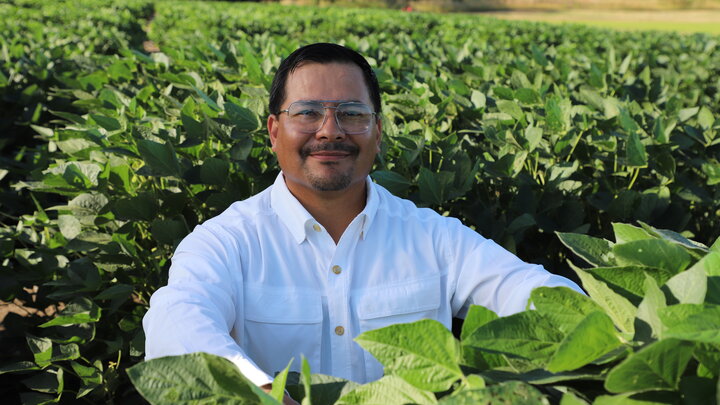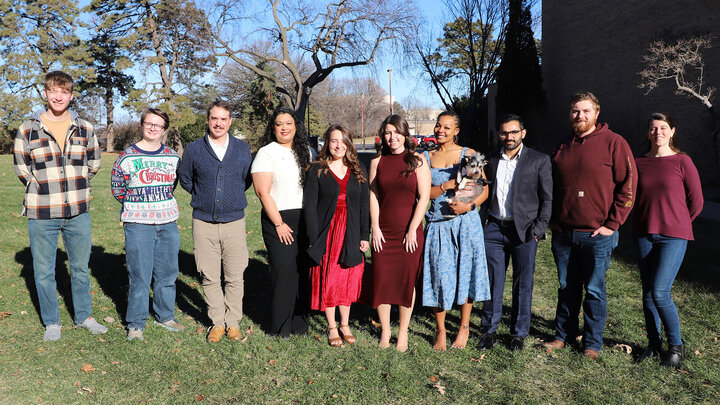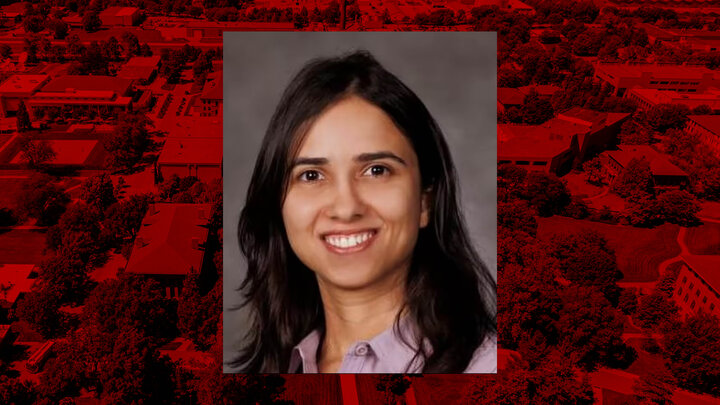Rye cover crop at late termination (early May) with and without corn residue removal at Rogers Memorial Farm near Lincoln, Nebraska. Photo courtesy of Humberto Blanco.
Humberto Blanco, University of Nebraska–Lincoln associate professor of Agronomy and Horticulture, is in the third year of leading a project titled “Enhancing Soil Ecosystem Services with Cover Crops” with funding provided by the Nebraska Environmental Trust. Co-investigators include Sabrina Ruis, postdoctoral research associate, Richard Ferguson, agronomy and horticulture professor and interim department head, and Paul Jasa, extension engineer in Nebraska’s Biological Systems Engineering department.
Enhancing soil ecosystem services is becoming more important to meet the increasing demands for food, feed, fiber, and fuel production. One of the strategies to enhance such services could be the use of cover crops. Yet, the potential multi-functionality of cover crops under different cropping systems and soil types, particularly in Nebraska has not been widely studied.
The objectives of this project are to quantify soil ecosystem services of cover crops and determine whether or not cover crops ameliorate negative effects of crop residue removal for livestock or biofuel on soil services in rainfed and irrigated croplands in Nebraska. The study is being conducted at Nebraska’s Rogers Memorial Farm near Lincoln, the South Central Agricultural Lab near Clay Center and at a farmer’s field near Johnson in south-central Nebraska.
This project will contribute to a better understanding of cover crop benefits on soil ecosystem services in both rainfed and irrigated systems in Nebraska. Blanco’s team is measuring wind and water erosion potential, water quality parameters, compaction, soil structural quality, hydraulic properties, soil temperature, soil biological and chemical quality and fertility, gas fluxes, soil carbon sequestration, cover crop biomass and crop yields. They are also analyzing the economics of cover crop use.
Study results to date have been published in the Nebraska Extension Cropwatch website and peer-reviewed journals including Bioenergy Research, Agronomy Journal, and Journal of Environmental Quality.
An article titled “Can cover crop use allow increased levels of corn residue removal for biofuel in irrigated and rainfed systems?” was published in Bioenergy Research. This study determined changes in water erosion potential, soil organic carbon and total nitrogen concentration, and crop yields under early- and late-terminated cover crop combined with five levels of corn residue removal after 3 years on rainfed and irrigated no-till continuous corn.
The Agronomy Journal article was a comprehensive review of using cover crops to offset effects of crop residue removal on soil carbon and other soil properties.
Under review with the Journal of Environmental Quality is a third paper which evaluates early and late-terminated cover crop induced changes to soil gas fluxes and related properties.
The CropWatch articles highlight the main practical implications of the team’s research.
Upcoming publications will highlight how cover crops and corn residue removal impact wind erosion potential, cover crop belowground biomass yield, and cover crop economics.
The Nebraska Legislature created the Nebraska Environmental Trust in 1992. Using revenue from the Nebraska Lottery, the Trust has provided over $289 million in grants to over 2,000 projects across the state. Anyone can apply for funding to protect habitat, improve water quality and establish recycling programs in Nebraska. The Nebraska Environmental Trust works to preserve, protect and restore our natural resources for future generations.
Lana Koepke Johnson | Agronomy and Horticulture




